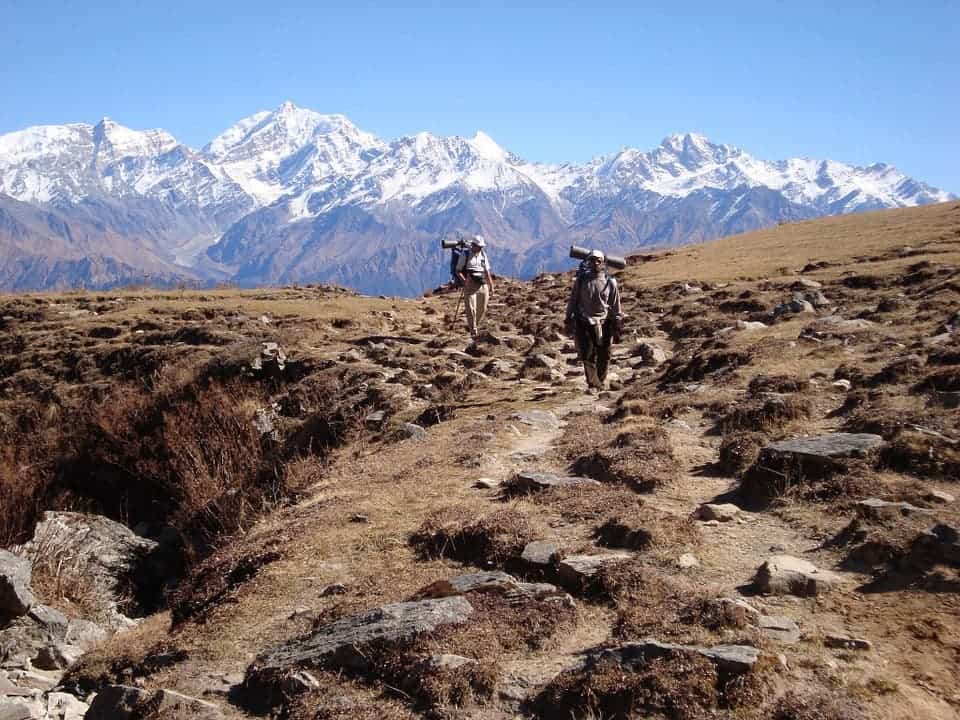While Western star climbers usually take the limelight, few Everest ascents would be possible without the help of the native Nepalese Sherpas. These brave people aren’t some happy assistants to the conquering Western demigod, as the media often portrays them. Rather Sherpas are some of the most gifted mountaineers in the world — superhuman even. According to a recent paper, Sherpas seem to owe their amazing ability of cope with the low-oxygen atmosphere to a genetic mutation that gives them a unique metabolism.

The people of the sky
Sherpa (Tibetan: “eastern people”, from shar “east” and pa “people”) are an ethnic group from the most mountainous region of Nepal, the Himalayas. This distinct population first appeared in the area some 500 years ago from Tibet, which has been settled by humans for at least 6,000 years. That’s ample time for advantageous genetic mutations to become selected across the generations.
Oxygen levels at its summit of Mt. Everest are one-third of those found at sea level and fewer than 6% of humans are capable of making the climb without supplementary oxygen. But that doesn’t include the Sherpas.
Scientists have always known the Sherpas have some ‘supergenes’ that must make them so biologically adapted to high altitude conditions. For instance, Sherpas have thinner blood with less hemoglobin and reduced capacity for oxygen transport which counterintuitively has the advantage of making blood flow easier. In other words, the Sherpas’ bodies make perfect use of the little available oxygen in the atmosphere.
To unravel the Sherpas’ physiology, a team led by Cambridge University’s Prof Andrew Murray went on a scientific expedition to the famous Everest Base Camp itself. There, 10 mostly European researchers and 15 elite Sherpas had samples taken so they could be compared. And this was no easy job for the participants. Some of the samples consisted of punctured muscle from the thigh.
It was the muscle tissue that showed how the Sherpas are so good at utilizing oxygen. They do so by limiting the amount of body fat burned and maximizing glucose consumption. While fat is a fantastic fuel, it has its downsides — like being more oxygen hungry than glucose. So by preferentially burning body sugar rather than body fat, the Sherpas can get more calories per each unit of oxygen they breathe — as much as 30% more power than lowlanders.
According to the results published in the Proceedings of the National Academy of Sciences, the Sherpas’ genetic mutations were identified at Cambridge University from the muscle samples.
“This adaptation appeared to be related, in part, to a putatively advantageous allele for the peroxisome proliferator-activated receptor A (PPARA) gene, which was enriched in the Sherpas compared with the Lowlanders,” the paper concludes.
Intriguingly, some of the genes that help the Sherpas breathe easier at high altitude were passed down by an extinct human species called the Denisovans though it’s not clear at this point if the metabolic gene is among them. Previously, another study identified five possible genes that relate to the Tibetans’ ability to thrive at such high altitudes, which likely apply to Sherpas as well. Two of them, EGL1 and EPAS1 have a role in regulating how much hemoglobin is in the blood.
“It’s not down to one gene, of course. We see better blood flow through the capillaries; and they appear to have a richer capillary network as well so that the oxygen can be delivered better to the tissues. But this gene would also have given them some advantage,” Murray told the BBC.


